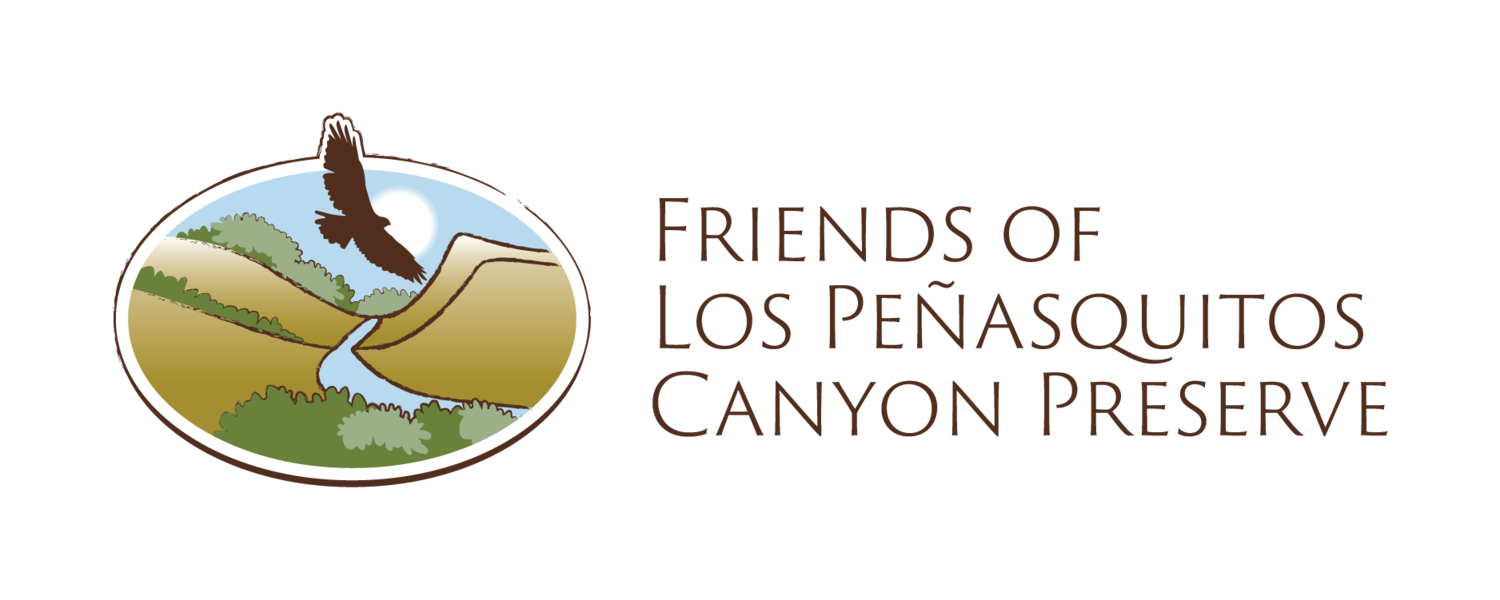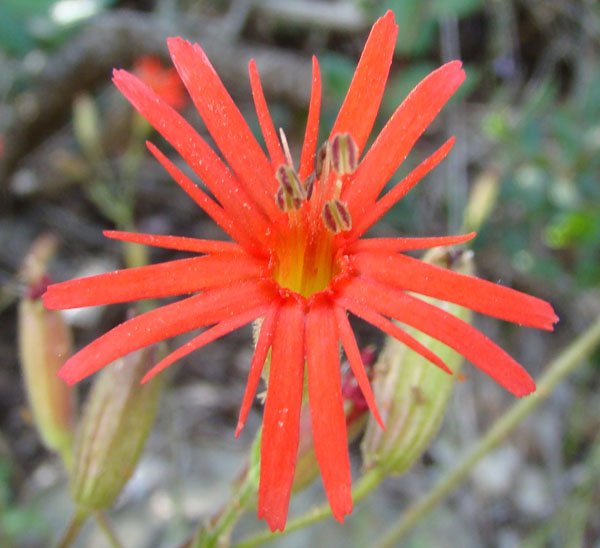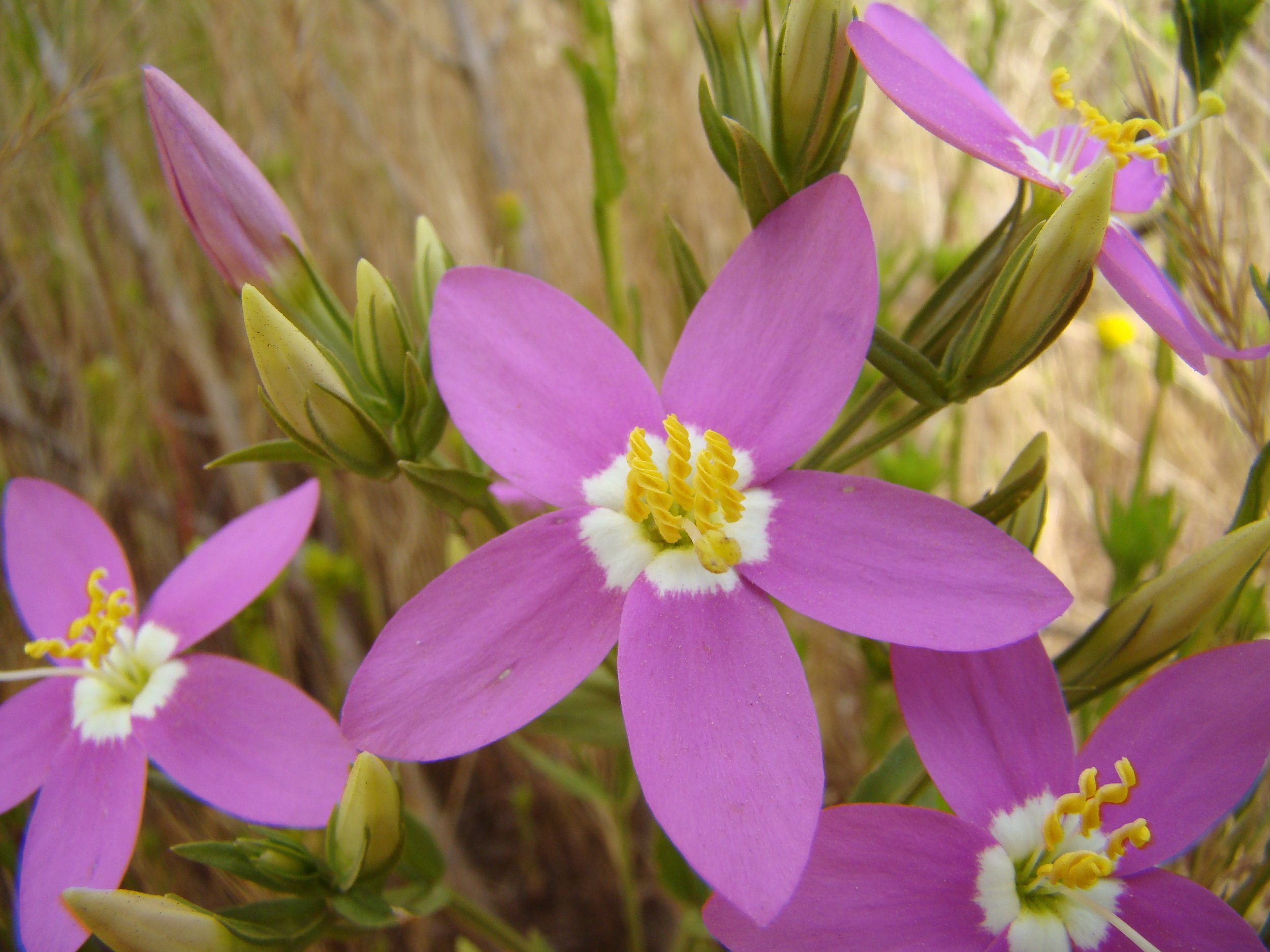An Exceptional Wildflower Spring
by Mary Lueking
Due to the higher-than-normal rainfall early this year, the wildflowers have been putting on an exceptional display. The uniqueness is not only in the number of species blooming simultaneously but in the sheer numbers of any one species that is blooming at one time. On a recent hike (May 6th) that I led for the Friends of Los Penasquitos Canyon Preserve from the west end of Park Village Drive, down to the waterfall area and then up to the duck pond, I generated a list of 27 different plant species that were in bloom (and I could have missed a few!).
Bush Monkeyflower (Diplacus aurantiacus)
Photo by Mary Lueking
As the season is progressing, the number of species that are blooming at any one time is still quite impressive. The actual species that are blooming may vary as time goes along but the show is still amazing.
One of my favorites is the Indian Pink (Silene laciniata) because of its intense red color that stands out against the green foliage background.
Indian Pink (Silene laciniata)
Photo by Linda King
Another one is the Canchalagua (Zeltnera venusta). If you look closely at the structure of the flower, you can see that the anthers are spiraling like corkscrews!
Canchalagua (Zeltnera venusta)
Photo by Linda King
The area surrounding the vernal pools (Carmel Mountain, Del Mar Mesa, Lopez Ridge), while the water has dried up by now, are in full bloom with Owl’s Clover, Orcutt Brodiaea, San Diego Mesa Mint, and Canchalagua to name a few.
People ask me all the time how I can remember the names of almost all the plants. My answer - I’ve had lots of practice. I was trained by the San Diego Natural History Museum and I’ve been leading hikes for their Canyoneer program for 15 years. When I was first getting started, it took many hours of observing flowers in the field, taking notes, researching, and going on hikes hosted by the museum and the numerous non-profits and city/county rangers in the area. The book I use most often to determine plant names is San Diego County Native Plants by James Lightner.
If you need assistance in identifying plants, there are a few “apps” out there that can be of assistance. Probably the most commonly used app is called “iNaturalist”. The nice thing about it is that it can also help identify birds, lizards, mushrooms, etc. A word of caution when using any app is that common names for plants can be very different in different regions. Even within San Diego County, I have seen common names of plants vary from south to north county and from east to west county. So, when I make lists of plants that I see on hikes, I try to always include the scientific names as a point of reference. Examples of this are the Indian Pink I mention above. If you search iNaturalist for this one, it comes up with Scarlet Catchfly as the common name. The scientific name however is the same – Silene laciniata. For the Canchalagua, iNaturalist calls it California Centaury (both with the scientific name of Zeltnera venusta.)
The fantastic bloom displays we have been seeing have definitely slowed with the heat and lack of rain, but there is still plenty to see. I encourage you to get out there and take a closer look!



